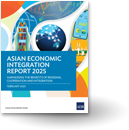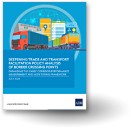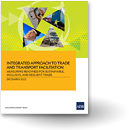Time to go back to the basics to benefit more from trade
When Robinson Crusoe was shipwrecked on a deserted island, he couldn’t enjoy any benefits from division of labor until he met Friday. Although the Robinson Crusoe economy is often used as a simple ‘one consumer, one producer’ type economic model, a more realistic setup cannot be construed without introducing multiple agents. Anybody who has taken basic economics classes might have had an eye-opening experience upon encountering Ricardian comparative advantage theory and gains from trade.
In fact, recognized or not, the fundamental merit of David Ricardo’s theory is being widely applied in our real life.
Think of a potluck dinner gathering where each guest contributes one dish. Even if I were an excellent cook capable of preparing several dishes, I would do best to dedicate my time, effort, and budget to the one dish that I can make relatively better than others, letting other friends take care of the rest. And everybody gains from this arrangement. A similar story goes on in highly sophisticated financial product such as swap transactions or, to a lesser extent, the recent trend of the ‘sharing economy’ like Uber and Airbnb. Beneath all these economic phenomena and activities lies the benefit of division of labor and gains from the exchange of goods and services.
Ironically, we are seeing this mantra losing some traction in international trade, precisely the area the theory was originally invented for. World trade growth is flagging, even underperforming the economic growth since 2012 in terms of volume. In Asia this phenomenon is more pronounced, with trade growth at a mere 3.8% compared to economic growth of 6.3% in 2014.
So what drives this new trend? ADB’s recent Asian Economic Integration Report 2015 highlights cyclical factors such as weak global demand, as well as potential structural factors like slower expansion of global value chains, and growth moderation and structural transformation in the People’s Republic of China (PRC). In fact, Asia’s income elasticity of trade declined from 2.69 before the global financial crisis to 1.30 afterwards, as measured by the vector error correction model that captures a stable long-term relationship between trade and income. This means trade is growing less for the same one-percentage increase in GDP than before.
Weak global aggregate demand, originally due to the slow recovery in the advanced economies and subsequent slowdown of larger emerging economies such as Russia and Brazil, has curbed growth of international trade. The global and regional value chain—which is believed to have expanded at a rapid pace for the past decades, in tandem with the progress in fragmentation of production stages due to lower trade costs coupled with technological advancement in modularization as well as the fast growing, efficiency seeking vertical foreign direct investment—seems to have reached a maturing point. In Asia, intermediate goods trade, which accounts for almost 60% of the regional total, declined 2.6% in 2014.
Another driver is the moderation in the PRC’s GDP growth rate and the change of its growth pattern. The PRC economy is transforming from high dependence on exports and investment toward relying more on consumption and the services sector. This is having an impact on its major trading partners, including resources-exporting countries. The decline in commodity prices also limits commodity exporting countries’ demand for goods and services from the rest of the world due to negative terms of trade shocks.
What are the consequences then? Lower trade growth implies less income generation for trading partners, which in turn results in lower economic growth for economies, in particular those highly dependent upon exports for growth unless domestic demand can fill the gap. For Asia, with a more than 55% intraregional share of total trade, this could have significant regional ramifications through the trade-growth nexus.
So what should be done to shore up the flagging international trade, given unabated sluggish demand environment worldwide? First, trade liberalization and facilitation should be pursued more vigorously at the national and international level. Trade costs, although reduced significantly over time, are still high in some regions. For example, the average time to export and import in Asia is measured at around 20 days compared with 7-11 days in North America and Western Europe, according to the World Bank’s Doing Business indicator.
With deepening global value chains, parts and components cross borders multiple times before getting manufactured into the final product, making the effective tariff rate much higher than the standard tariff rate. While the number of bilateral and mega foreign trade agreements is increasing, those involving small economies are still limited. Behind the border procedures and non-tariff barriers are still significant, hindering the free flow of goods and services.
At the same time, stronger policy efforts should be made to help firms—in particular small and medium sized enterprises—participate in the global value chain instead of keeping them left behind. These include infrastructure development for better connectivity, investment in both physical and human capital, and establishing quality institutions and business environment.
200 years after Ricardo’s articulation, the philosophical ground of comparative advantage and gains from trade still remains strong. What matters is whether we are always mindful of going back to the basics or not.
Original article was published at the ADB Blog and duplicated here with permission from the author. *




